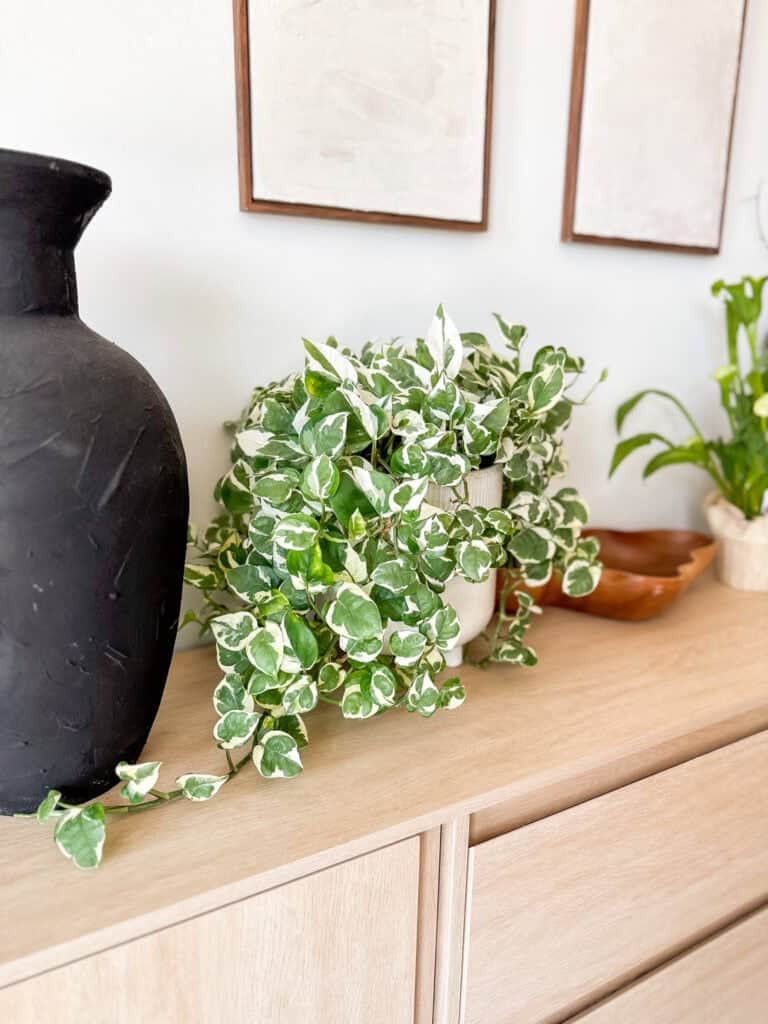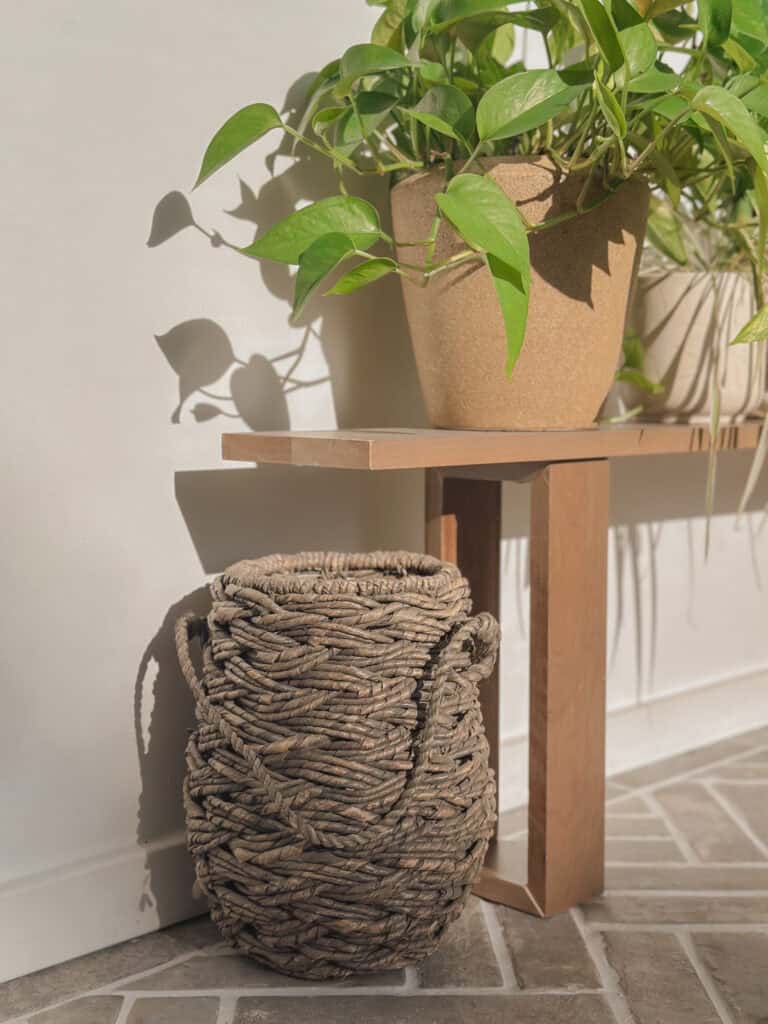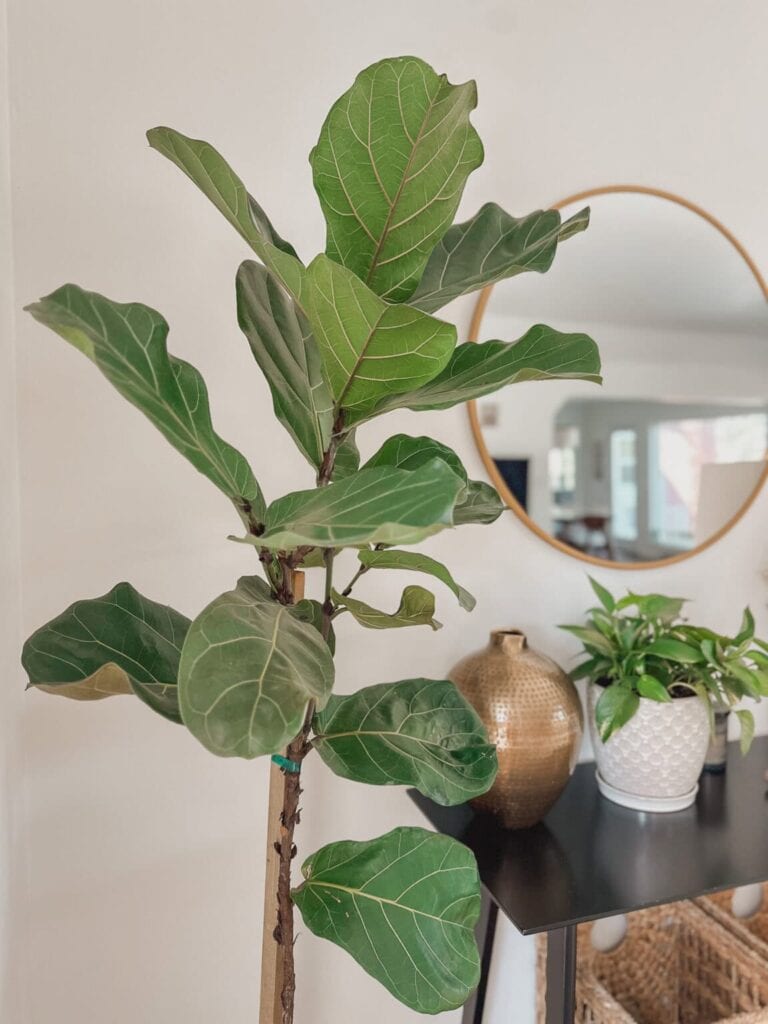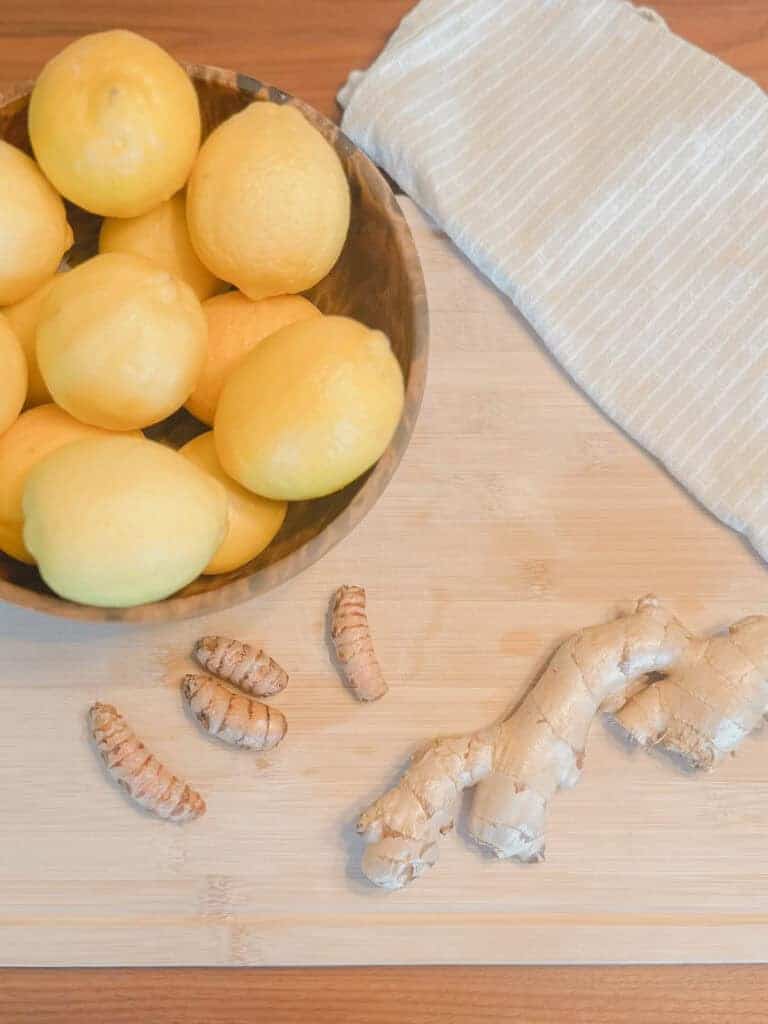How to Get Rid of Gnats in Indoor Plants: A Natural Solution
Almost every houseplant owner will eventually encounter the frustrating, gross problem of gnats in indoor plants. Fungal gnats are generally harmless to your plants, but they can quickly multiply, spread to other plants, and become a constant nuisance around your home.
In my case, the problem started when I left a bag of potting soil outside. It wasn’t fully sealed, and somehow it became infested. When I transplanted my plants, I inadvertently brought the gnats into my home. Now, they appear wherever there’s even a tiny bit of moisture—our sink, bathtub, and under the dish drying rack. Yuck!
Luckily, I found a solution that is both natural and effective- so far. Keep reading to learn about this natural spray to kill plant gnats without harsh chemicals or harming your plants!

What Are Indoor Plant Gnats?
Fungal gnats are tiny black flies that thrive in moist, nutrient-rich soil. While adult gnats are mostly a nuisance, their larvae feed on decaying organic matter and root hairs in the soil. In large numbers, they can stress delicate seedlings or newly potted plants.
Quick Facts About Indoor Plant Gnats:
- Adults are about 1/8 inch long and can fly short distances.
- Larvae live in soil and feed on decomposing matter.
- They are attracted to overwatered or poorly drained soil.
Where Do Gnats Come From?
Gnats can enter your home in a few ways:
- Contaminated Potting Soil: As in my case, soil that was left open can harbor gnat eggs.
- Overwatered Plants: Moist soil creates the perfect breeding ground.
- New Plants: Even store-bought plants may already carry gnat larvae.
Once inside, gnats can quickly multiply and spread to other indoor plants if not treated promptly.
Are Gnats Bad for Your Plants?
For most established houseplants, gnats are more annoying than dangerous (and really gross). Adult gnats mostly fly around and don’t cause damage. However, larvae feed on organic matter and sometimes tiny roots, which can harm very young seedlings or stressed plants.
The good news? You don’t need harsh chemicals to solve this problem—just a consistent, gentle approach.

How to Get Rid of Indoor Plant Gnats Naturally
I wanted a solution that wouldn’t harm my plants, family, or pets. After some research, I found this essential oil-based indoor plant spray, Kate’s Home & Garden Plant Spray.
It contains:
- Rosemary oil
- Peppermint oil
- Geranial
- Sesame oil
How I Use the Spray:
- Shake well before use.
- Test on a small section of your plant and wait an hour.
- Spray one to two times on both sides of the leaves, avoiding new growth.
- Mist the soil until the surface is lightly covered.
- Reapply every one to two weeks, adjusting frequency for larger infestations.
After just two applications, I noticed a major decrease in gnats—not a full eradication yet, but the improvement was noticeable. With over 50 plants and 12 that were repotted in infected soil, this method is proving to be a gentle, long-term solution.
Tips for Maximizing Success with Natural Gnat Control
- Open Windows: Allow airflow when spraying to help disperse the essential oils.
- Timing: I spray my plants during my Sunday reset routine, giving the spray a few hours to dry.
- Soil Focus: Spray directly on the soil where larvae live. For large infestations, consider soil applications every 5 days.
- Consistency: Repeated applications are key to gradually reducing the gnat population.
FAQ: Common Questions About Indoor Plant Gnats
Q: Will gnats kill my plants?
A: Adult gnats don’t harm plants, but larvae can feed on roots. Most established plants tolerate small infestations without serious damage.
Q: How long does it take to get rid of gnats naturally?
A: Depending on the size of your infestation, expect several weeks of consistent treatment. Small plant populations may see results faster.
Q: Can I use chemical insecticides instead?
A: Yes, but chemical treatments can harm your plants, pets, and family. Essential oil-based sprays are safer for indoor use.
Q: Why do gnats keep coming back?
A: Overwatered soil, contaminated new plants, or missed eggs in the soil can allow gnats to return. Consistent application of natural treatments is key.
Q: Are gnats harmful to humans or pets?
A: No, fungal gnats are primarily a nuisance and don’t bite or transmit disease.
A Gentle, Long-Term Solution
Using an essential oil-based spray won’t eliminate gnats overnight, but with patience and consistent application, it can dramatically reduce infestations. For smaller gnat problems, weekly applications are usually enough. For more severe infestations, consider targeting the soil more frequently.
I’ve tried neem oils in the past, and while I’ve had some success with them, they can smell pretty horrible. Neem oil has a strange and particular scent that is often described as smelling of garlic, sulfur or even rotting meat- a pretty revolting combination of scents if you ask me.
This spray, which contains rosemary and peppermint, smells minty and herby, which is much more pleasant! And it’s been just as, if not more effective, for gnat management in my home. I have noticed a noticeable drop in gnat populations in just three weeks, and with continued care, I expect the numbers to drop even further.
Do you have your own tried-and-true gnat control methods? I’d love to hear them—drop your tips in the comments below!







Join the List
Stay up to date & receive the latest posts in your inbox.